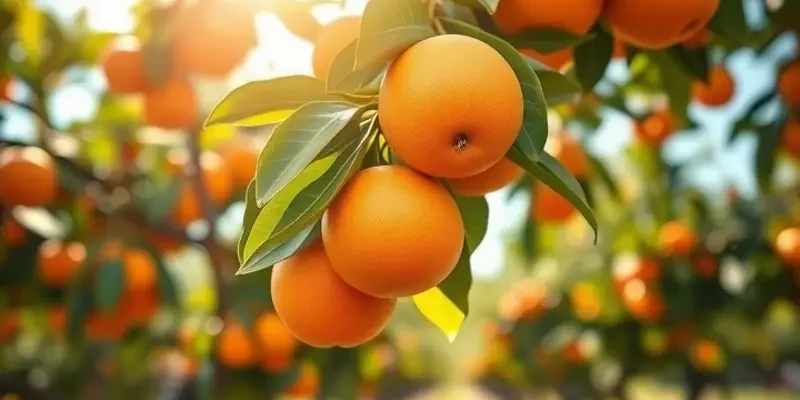Citrus fruits like oranges, lemons, and grapefruits are a staple in many households due to their bright flavors and numerous health benefits. However, improper storage can lead to rapid spoilage and waste. Knowing how to store these fruits correctly can significantly extend their shelf life. This guide shares practical tips and techniques that will help you keep your citrus fresh and enjoyable for longer, reducing waste and improving your food management at home.
Optimal Storage Conditions for Citrus Fruits

Citrus fruits, with their vibrant flavors and nutritional benefits, require specific storage conditions to minimize spoilage. By understanding the optimal temperature, humidity, and light conditions, you can significantly extend the shelf life of these fruits.
Temperature
Citrus fruits thrive in environments that are neither too cold nor too warm. For short-term storage (up to a week), keep them at room temperature, ideally between 60°F to 70°F (15°C to 21°C). For long-term storage, refrigerate them between 45°F to 50°F (7°C to 10°C). Ensure the temperature remains stable to prevent premature spoilage.
Humidity
The ideal humidity level for storing citrus is around 85% to 95%. High humidity prevents the fruit from drying out, while low humidity can lead to moisture loss and skin shriveling. To manage humidity, consider storing citrus in the crisper drawer of your refrigerator, which is typically designed to maintain higher humidity levels.
Light
Avoid exposing citrus fruits to direct sunlight, as it can cause them to over-ripen. Instead, store them in a dark, cool place when kept at room temperature. In the refrigerator, ensure they are shielded from any light emitted once the door is closed.
Best Practices for Storage
When storing citrus fruits, it’s crucial to use the right containers. Breathable containers, such as mesh bags or perforated plastic bags, allow air circulation around the fruits, reducing the risk of mold. Avoid airtight containers, as trapped moisture can foster mold growth.
Separating fruits is another key strategy. Citrus fruits emit ethylene gas, which can accelerate ripening and spoilage if left in close proximity to each other. Keep fruits like oranges and lemons apart from more sensitive fruits like avocados or bananas to prevent ethylene-induced overripening.
Checking for Spoilage
Regularly inspecting citrus fruits for signs of spoilage can prevent wastage. Look out for soft spots, discoloration, or mold. Remove spoiled fruits immediately to prevent them from affecting others. Quick interventions can dramatically reduce overall spoilage and extend the shelf life of your citrus stock.
For those interested in a broader sustainable kitchen approach, you might find this article on creating an eco-smart kitchen storage insightful.
These guidelines can help you maintain the freshness of your citrus fruits, reduce waste, and ensure you always have delicious, fresh fruit at hand. By adopting these practices, you’re not only extending the life of your produce but also contributing to less food waste and a more sustainable kitchen environment.
Practical Tips for Managing Citrus at Home

Maintaining freshness in citrus involves intentional steps beyond initial storage. Consider incorporating citrus into your daily meals to make experiencing its full, refreshing potential part of your routine. Citrus fruits, like lemons, limes, and oranges, offer versatility across many culinary applications. Add a squeeze of lemon to your water, zest lime over salads, or incorporate orange segments into smoothies for a fresh zing.
Excess citrus should never go to waste. When you find your fruit bowl overflowing, consider freezing them. Simply slice the fruit and place the segments on a tray in the freezer. Once frozen, store them in airtight containers. They become perfect for chilled drinks or as cool, refreshing snacks. You can also freeze citrus juice in ice cube trays—ideal for adding a burst of freshness to sauces or soups.
Dehydrating citrus is another excellent alternative. Thinly slice the fruits and lay them on drying racks. You can use your oven at a low temperature or a dehydrator for this purpose. Dehydrated citrus slices make wonderful additions to teas, potpourri, or as a flavor-enriching garnish for dishes.
Incorporate citrus into meal prep strategies to ensure no fruit goes unused. Grate zest and store it in small containers in the fridge. It can be a quick flavor booster for dressings, marinades, or baked goods. If you’re looking to simplify meal preparation while minimizing waste, explore practical ingredient batching techniques to make citrus utilization even more efficient.
Citrus rinds have underestimated versatile applications. Don’t throw away peels—instead, try candied rinds. Simply boil them in sugar syrup until translucent, and you have a sweet treat with tangy notes. You can also dry citrus peels, grind them into a fine powder, and use it as a seasoning or in baked recipes.
Juice is another byproduct of citrus that holds immense utility. Apart from culinary uses, consider using the juice for cleaning purposes. The natural acidity of lemon juice, for instance, can be effective in removing food odors from hands or freshening up kitchen surfaces.
Lastly, remember that minimizing waste doesn’t mean sacrificing flavor or nutrition. As you embrace these practices, you’ll find preserving your citrus abundance not only reduces spoilage but also enhances your culinary repertoire.
Final words
By understanding the ideal storage conditions and implementing practical management strategies, you can significantly extend the freshness of your citrus fruits. Regularly checking your stored produce for spoilage, utilizing excess fruits creatively, and ensuring proper temperature and humidity levels will keep citrus vibrant and flavorful. Minimizing spoilage not only reduces food waste but also enhances your culinary experience. It’s about embracing the abundance of citrus and making the most out of every fruit you bring home.







